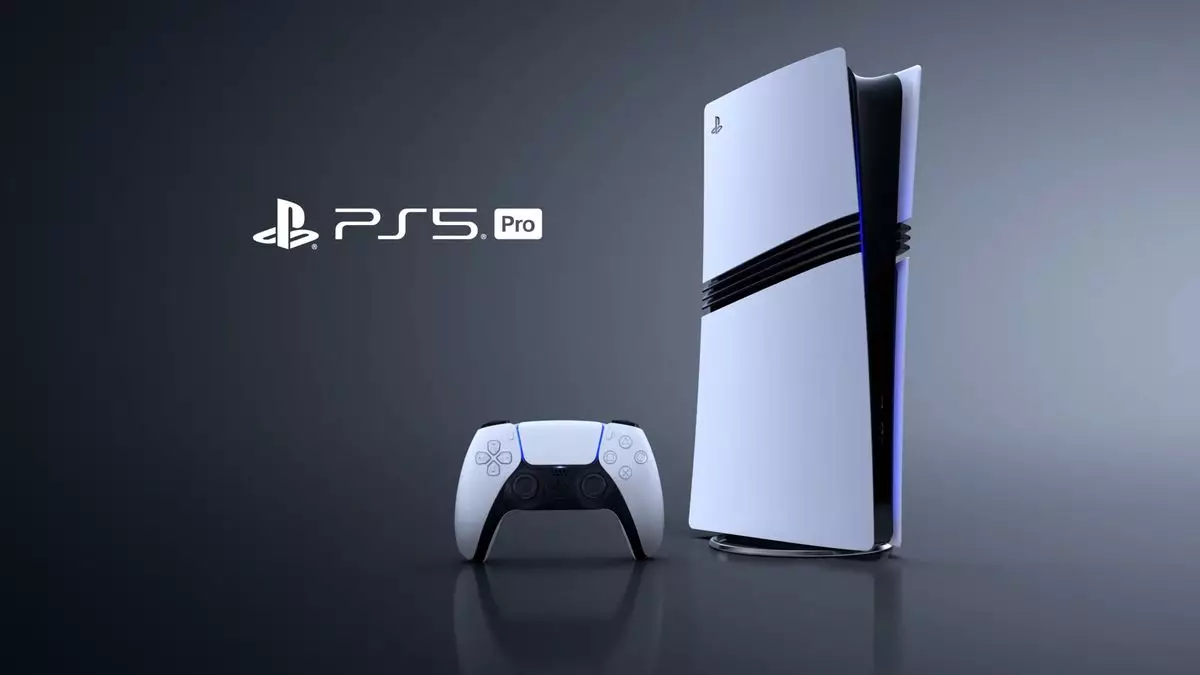In a landscape where artificial intelligence (AI) is revolutionizing gaming graphics, Sony has resolutely ventured into the creation of its own hardware for AI upscaling, setting it apart from its main technology partner, AMD. This strategic decision was revealed by Mark Cerny, the lead architect for Sony’s PlayStation consoles, during a comprehensive discussion about the PS5 Pro. The need for specialized AI acceleration in graphics processing was imperative for Sony, prompting the company to take an independent route rather than relying on AMD’s existing technology.
AI has become a cornerstone in enhancing gaming experiences, primarily through graphics upscaling technologies. Currently, market leaders like Nvidia and Intel have specialized matrix math hardware in their graphics processing units (GPUs), enabling advanced machine learning (ML) algorithms to perform at high levels. Such technologies, notably Nvidia’s Deep Learning Super Sampling (DLSS) and Intel’s Xe Super Sampling (XeSS), are reshaping how gamers perceive graphics fidelity. Conversely, AMD has not implemented dedicated matrix math capabilities in their GPUs, which restricts its FidelityFX Super Resolution (FSR) to traditional algorithms. This inconsistency in technology performance prompted Sony to evaluate its trajectory for the PS5 Pro.
Cerny disclosed that Sony faced pivotal decisions while developing ML acceleration for the PS5 Pro. The first was whether to incorporate a dedicated Neural Processing Unit (NPU) or to enhance the existing GPU. Opting for the latter allowed Sony to push the envelope while still building upon the AMD architecture. In a move that emphasized their commitment to the PS5 Pro project, which began in 2020, Sony opted not to license generic ML technology. By crafting their own unique hardware and software solutions, Sony sought to gain deeper insights into the specific workloads tied to the console, which they deemed critical for maximizing performance.
Setting an ambitious target of reaching 300 TOPS (trillions of operations per second) of ML performance—a benchmark comparable to Nvidia’s RTX 4060 Ti—Sony undertook an extensive modification of AMD’s RDNA 2 architecture. This endeavor was aimed at enhancing the shader cores and memory systems to manage the intense demands of matrix math, which is essential for effective AI-driven upscaling.
Technological Challenges and Innovations
Adding matrix math capabilities presented numerous challenges, particularly in bandwidth requirements. Cerny highlighted that without tailored memory system enhancements, the new ML hardware would struggle to reach its potential performance. To counter this, Sony implemented an innovative on-chip memory solution paired with tiling algorithms. These algorithms significantly streamlined the process, allowing the GPU to execute matrix math without taxing the broader system memory. This custom-designed system utilized vector registers in the RDNA 2 shaders as temporary RAM, providing an impressive 15 MB of high-bandwidth memory that dwarfs the PS5’s GDDR6 memory bandwidth.
The culmination of this four-year design journey resulted in a new upscaling software branded as PlayStation Spectral Super Resolution (PSSR). As Sony’s answer to high-performance upscaling technologies like DLSS and XeSS, PSSR represents a leap toward advanced graphical fidelity aimed at both gamers and developers.
The strategic implications of Sony’s decision to build custom ML hardware extend beyond mere performance metrics. By not conforming to a licensing model with AMD, Sony positions itself for long-term independence in the rapidly evolving GPU landscape. While they may continue to lease AMD’s broader GPU architectures, the realm of machine learning appears to hold greater significance for Sony.
Cerny’s insights suggest that the ambition behind this project may reflect broader concerns about AMD’s inability to introduce ML hardware. In fact, the continued absence of machine learning capabilities in AMD’s RDNA roadmap raises questions about the company’s competitiveness in the AI domain. As competitors like Intel and Nvidia advance with their own ML-enhanced GPUs, AMD’s current and future hardware offerings seem to lag significantly.
The development of Sony’s PSSR isn’t merely a technical accomplishment; it represents a critical strategic pivot in gaming experiences. The richness of visuals enabled by advanced AI upscaling could redefine gameplay for millions. Nevertheless, it also serves as a wake-up call for AMD, which faces mounting pressure to innovate in an increasingly competitive industry.
As the gaming community eagerly anticipates the rollout of the PS5 Pro, the spotlight will undoubtedly be on how effective Sony’s leap into AI upscaling will impact the overall gaming landscape. With potential repercussions for AMD’s future offerings, the industry awaits a time when innovative technologies truly match gaming enthusiasts’ expectations and desires.


Leave a Reply